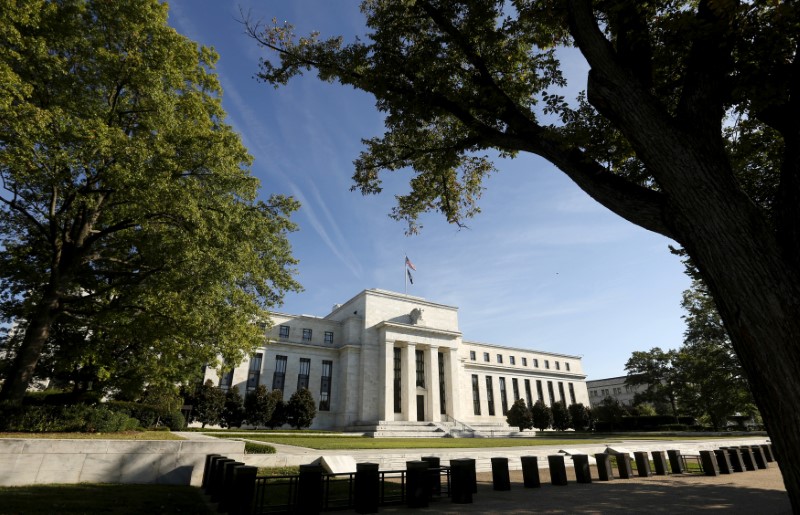 © Reuters. FILE PHOTO: The Federal Reserve building in Washington
© Reuters. FILE PHOTO: The Federal Reserve building in WashingtonNEW YORK (Reuters) – The Federal Reserve should focus on lowering interest rates in the face of the next recession, and avoid relying on asset purchases that are a less effective policy tool than previously thought, four top U.S. economists told a roomful of Fed officials on Friday.
Their paper analyzed the efficacy of the U.S. central bank’s $3.5-trillion in bond purchases in response to the 2007-2009 financial crisis and recession. It found that this so-called quantitative easing, or QE, did not affect market yields much and did not lower 10-year Treasury rates by the 1-percent claimed by prior research on the topic.
The findings, including a recommendation for the Fed to keep a large portfolio of mostly short-term government debt, appears to lend support to the central bank’s plan to continue raising rates this year and in the years ahead so that it is better prepared to address an eventual economic slowdown.
“We find that the Fed’s balance sheet is a less reliable and effective tool than as perceived by many,” concluded the paper presented at the annual monetary policy forum hosted in New York by the University of Chicago Booth School of Business.
“The central question going forward should be the path for short-term interest rates rather than the path of the balance sheet,” it said. “That leaves lowering the short rate as the primary tool available to fight the next recession.”
New York Fed President William Dudley and Eric Rosengren of the Boston Fed were to critique the findings at the conference attended by a who’s who of the central bank, Wall Street and academia. The Fed is undergoing an unprecedented leadership overhaul just as it confronts the possibility of an economy running hot thanks to fiscal stimulus, low unemployment and synchronized global growth.
Since late 2015, the Fed has raised rates from rock-bottom to between 1.25-1.5 percent and plans to hike about three more times this year. In October it began gradually shedding bond holdings by no more than $10 billion per month, with that cap edging higher throughout this year.
While the Fed has not set an end point, the paper’s authors – David Greenlaw of Morgan Stanley (NYSE:), Ethan Harris of Bank of America Merrill Lynch (NYSE:), James Hamilton of University of California at San Diego, and Kenneth West of University of Wisconsin – said it should not go too far and consider larger and looser run-off caps.
In conducting the research, the four economists studied surprise Fed announcements on the portfolio, the market response, and the extent to which Reuters news articles credited the central bank for the market moves. They said that driving so-called excess reserves much below $500 billion would be difficult.
Fusion Media or anyone involved with Fusion Media will not accept any liability for loss or damage as a result of reliance on the information including data, quotes, charts and buy/sell signals contained within this website. Please be fully informed regarding the risks and costs associated with trading the financial markets, it is one of the riskiest investment forms possible.
Source: Investing.com




























